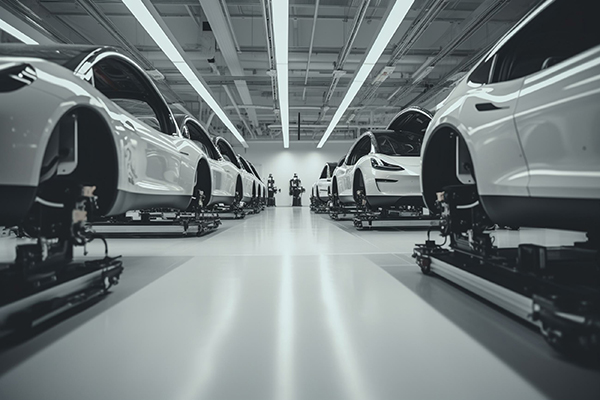Heavier EVs are tearing up California roadways – but paying nothing for road maintenance
02/11/2024 / By Ava Grace

Larger electric vehicles (EVs) are causing California’s roads to experience even more wear and tear – and these cars contribute little to nothing to road taxes that could fix these roads.
“Can it be true that California, in pursuit of reduced emissions from internal combustion engine vehicles, has mandated that heavier EV cars and trucks tear up the states’ roads?” asked Ronald Stein, engineer and senior policy advisor on energy literacy for the Heartland Institute and the Committee for a Constructive Tomorrow.
California has almost 400,000 miles of roadways used by the more than 31 million motor vehicles in the state. Those roadways are heavily dependent on road taxes from fuels that contribute more than $8.8 billion annually, the same gas tax revenues that also fund many environmental programs and the high speed rail project. (Related: Nobody is buying electric cars, but automakers continue to manufacture them in accordance with “green” agenda).
California to lose billions in income due to shift to EVs
California’s income from gas taxes will drop by nearly $6 billion in the next decade due to the state’s electric car rules and other climate programs, “likely resulting in a decline in highway conditions for drivers,” according to a state analysis.
As California phases in major policies aimed at reducing greenhouse gas emissions – such as the mandates for zero-emission cars and trucks – consumers buy less gasoline and diesel, and consequently pay less taxes.
Fuel taxes and vehicle fees fund about a third of state spending on transportation. This year’s budget, passed in June, includes about $14.2 billion in state funding for transportation.
A report from the state’s Legislative Analyst’s Office (LAO) projects a net transportation funding decline of about $4.4 billion — or 31 percent — within the next decade. This money is a primary funding source for highway maintenance. The report says these revenue decreases, especially if gone unchecked, could result in deteriorating highway conditions for drivers.
“As the state tries to meet its ambitious climate goals through the adoption of zero emission vehicles, and greater fuel efficiency within conventional vehicles, the report finds that we’ll see a decline in fuel tax revenues,” said Frank Jimenez, a senior fiscal and policy analyst with the office.
The report projects declines of $5 billion, or 64 percent, in the state’s gasoline excise tax, $290 million, or 20 percent, in the diesel excise tax and $420 million, or 20 percent, in the diesel sales tax, over the next decade.
Highway maintenance is funded primarily by the fuel taxes “and therefore will face significant funding declines,” the report said. “We project funding for these programs will drop by roughly $1.5 billion (26 percent) over the next decade, from $5.7 billion to $4.2 billion.”
“Caltrans is reviewing the report but does not comment on potential legislative proposals,” a spokesperson said.
Lawmakers could make up for the shortfalls in many of these programs by spending less on transportation, but that would likely mean worsening roads and highways, and also some public mass transit cuts.
They might also consider further increasing gas taxes or vehicle fees. But that might have an outsized impact on the state’s lower-income communities, who are expected to adopt zero-emission vehicles more slowly as middle- or higher-income Californians.
Watch this video of John Stossel discussing inconvenient truths about electric vehicles.
This video is from the GalacticStorm channel on Brighteon.com.
More related stories:
Over 1.1 million Tesla electric cars in China RECALLED over dangerous braking defect.
Electric cars lose value TWICE as fast as gas vehicles, study finds.
Hertz to sell 20k EVs from rental fleet, says electric cars too expensive to repair.
EV supply chain problems drive GM to build “green” battery packs for electric cars BY HAND.
Sources include:
Submit a correction >>
Tagged Under:
California, california collapse, Climate, Collapsifornia, electric cars, electric vehicles, EVs, green tyranny, heavy EVs, highways, infrastructure, road taxes, taxes, transportation, vehicles
This article may contain statements that reflect the opinion of the author
RECENT NEWS & ARTICLES
COPYRIGHT © 2017 CARBON DIOXIDE NEWS




















